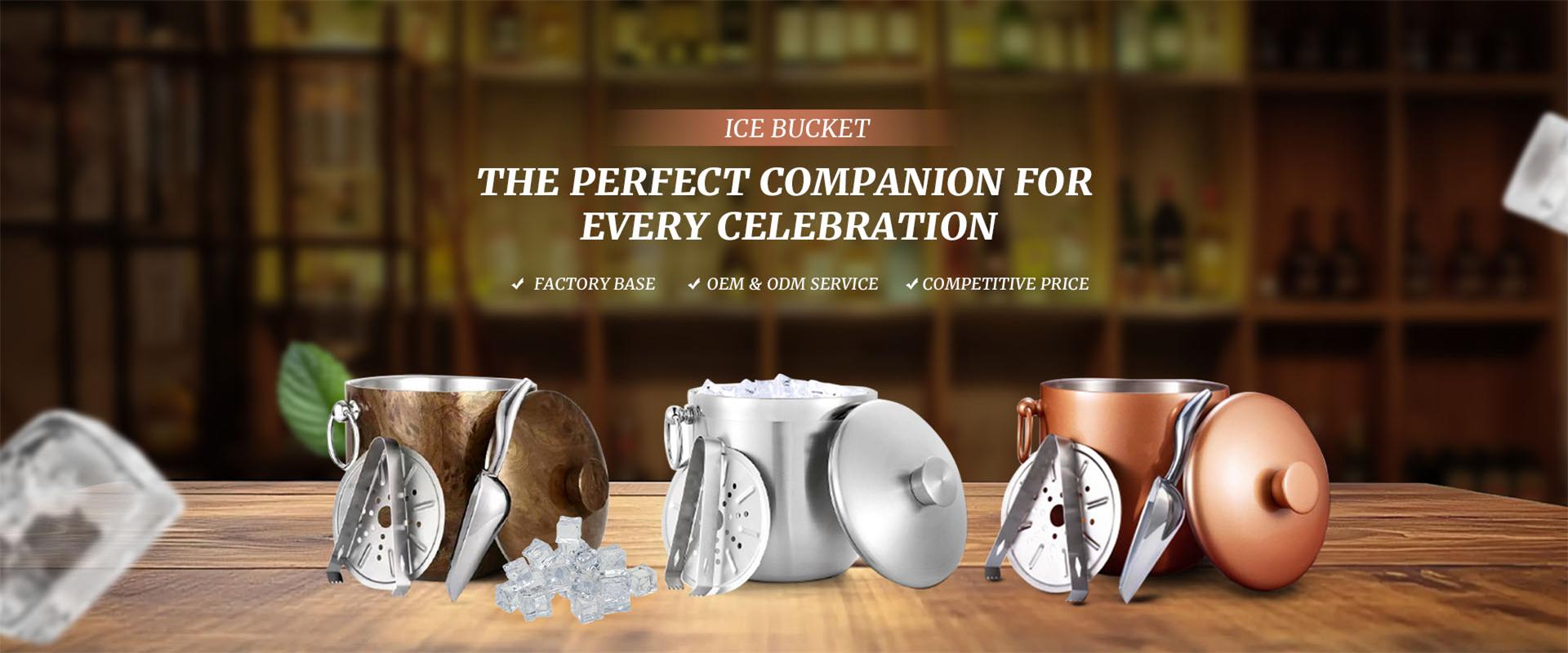Why Do You Put Salt in Ice Buckets?
When it comes to cooling drinks quickly or keeping beverages cold for a longer time, using an Ice Bucket is a common practice. However, many people are unaware that adding salt to the ice can significantly enhance its cooling effect. This seemingly simple trick has been used in various industries, from bartending to catering, but why exactly is salt used in ice buckets? Let’s explore the science behind it, the benefits, and how you can make the most of this technique.

The Science Behind Salt and Ice
At first glance, it might seem counterintuitive to add salt to ice—after all, salt is often associated with food and seasoning, not cooling. However, the reality is that salt plays a crucial role in lowering the freezing point of water, a phenomenon known as freezing point depression.
When salt is added to ice, it dissolves into the thin layer of water that forms on the surface of the ice due to melting. The salt ions interfere with the ability of water molecules to bond and form solid ice. This reduces the temperature at which water freezes, making the ice melt at a much lower temperature. Consequently, the ice water mixture remains colder for a longer time.
This process allows the ice to absorb heat more efficiently, keeping the contents of the ice bucket cooler for extended periods.
Benefits of Adding Salt to Ice Buckets
Longer Cooling Time: The most immediate benefit of adding salt to ice is that it helps maintain a lower temperature for a longer period. When salt is added to the ice, the ice melts more slowly, allowing the ice to stay frozen longer than it would without the salt. This is particularly useful in situations where you need to keep beverages or perishables cool over extended periods.
Faster Cooling of Drinks: Salt accelerates the cooling process by making the ice melt faster while keeping the temperature lower. This means that you can chill drinks in a fraction of the time it would take with ice alone. In bars and restaurants, where customers often request cold beverages in a hurry, this technique proves invaluable.
Ideal for Outdoor Events: Whether you’re hosting a backyard barbecue, a beach party, or any other outdoor gathering, adding salt to the ice in your ice bucket can help maintain the cold for hours, especially in warm weather conditions. The hotter the surroundings, the faster the ice will melt without salt. Salt helps combat this by lowering the melting point and ensuring the ice stays frozen longer.
Improved Performance for Insulated Buckets: If you're using an insulated ice bucket, adding salt can take the cooling experience to the next level. The insulation helps keep the cold in, while the salt ensures that the ice remains colder for longer, making this a winning combination for optimal chilling.
Practical Applications of Salted Ice Buckets
Salted ice buckets aren’t just for home use—they’re an essential tool in many industries. Here are some examples of where this technique is widely used:
Bartenders: Bartenders often use salt in ice buckets to keep their drink ingredients cool, particularly for cocktails that require chilled glasses. The salt speeds up the cooling process of ice, ensuring that the drink stays cold without the ice diluting it too quickly.
Caterers and Event Planners: When catering to large events or parties, it’s important to keep perishable items like seafood, salads, and beverages chilled. Adding salt to the ice in large ice buckets helps caterers maintain a low temperature for a more extended period, reducing the risk of food spoilage and ensuring guest satisfaction.
Restaurants and Bars: For establishments that serve cold beverages or need to keep certain food items cool, adding salt to ice buckets enhances efficiency and guarantees that drinks like wine, beer, or champagne remain at the perfect temperature.
A Few Things to Keep in Mind
While adding salt to ice buckets can be a game-changer in terms of cooling, there are a few things you should remember:
Avoid Direct Contact with Food: If you are using salt in an ice bucket for food items, make sure the salt does not directly touch the food, as it can alter the taste. This is especially important when chilling delicate items like fruits or seafood.
Excess Salt Use: While salt is effective at reducing the melting point of ice, adding too much salt may cause the ice to melt too quickly, leading to faster dilution of drinks or less effective cooling. A moderate amount of salt is key to achieving the desired effect.
Clean the Bucket Regularly: Over time, salt can build up and cause corrosion on your ice bucket if left uncleaned. Be sure to clean your ice bucket regularly to prevent this.
Conclusion
Adding salt to an ice bucket may seem like a small detail, but it can significantly improve the efficiency of your cooling system. By lowering the freezing point of water, salt helps ice stay frozen longer, cool drinks faster, and maintain a lower temperature over time. Whether you’re hosting a summer party, running a bar, or simply trying to keep your drinks cold at home, this simple technique can elevate the chilling process.
If you’re in the market for high-quality ice buckets, whether for personal or commercial use, understanding the science behind ice and salt can help you make the best decision for your needs. If you want to learn more about ice bucket, please contact us.
Previous: How Long Do Ice Buckets Keep Ice?



